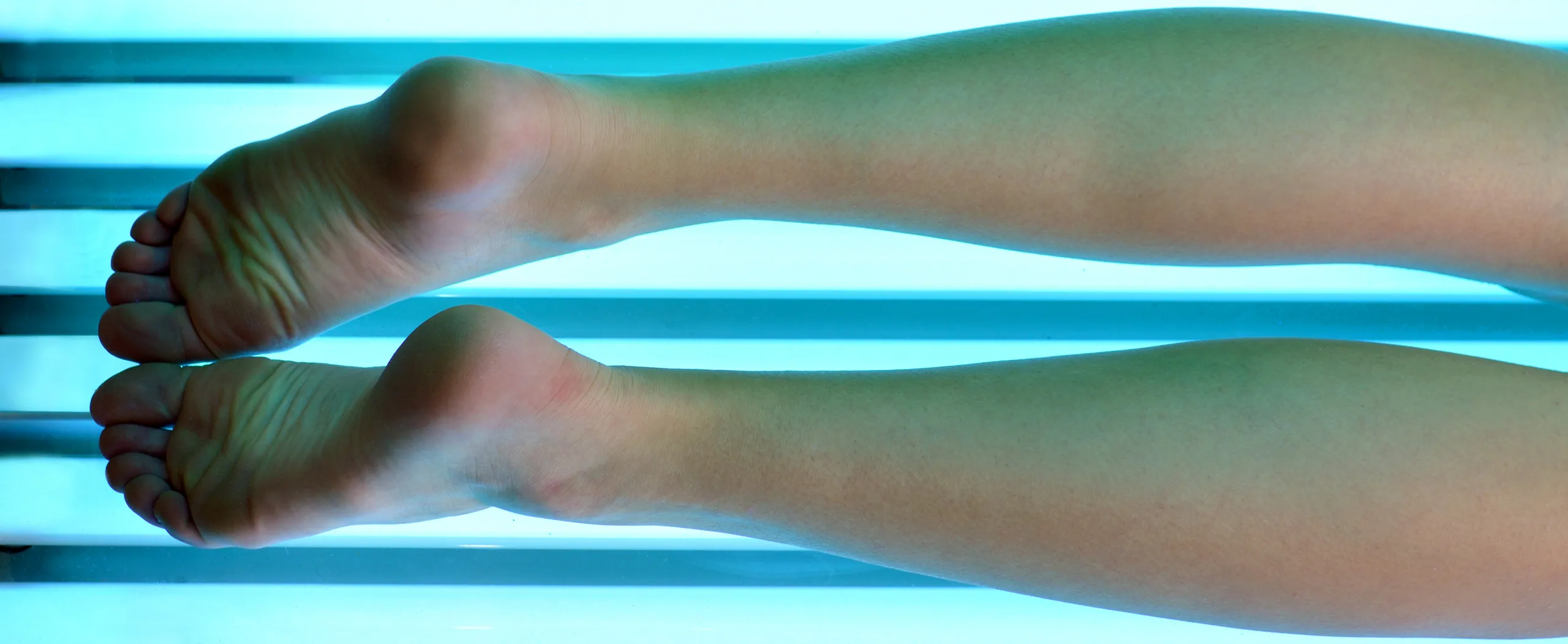
Menu
Terug
Menu
Terug

How bad is the tanning bed for your skin?
Do you want to get a bit of a tan before you go on vacation? Or do you like to keep up your complexion throughout the year? There are several reasons for visiting a tanning salon. In particular, many people do it for relaxation and the feeling of light and warmth on the skin. Moreover, research shows that people generally find a tinted complexion more attractive. But how bad is the tanning bed really for your skin?
Tanning beds and skin cancer
Tanning beds are a known risk factor for developing skin cancer. Research shows that past use of the tanning bed increased the risk of skin cancer by 20% and each additional tanning session per year increased the risk by 1.8%. Still the incidence of skin cancer is increasing worldwide. On the other hand, the dangers of tanning beds are the same as the dangers of the sun. So you should always protect your skin properly!
Too much UV-A radiation
Under the sunbed, we are exposed to UV-A and UV-B radiation. Only the dose of UV-A radiation at the tanning bed is a lot higher than in the sun. Of course, you have different strengths at the tanning bed, but it can be as much as 10 to 15 times the amount you would get outside. And, of course, you can guess that this is not very good for your skin. The A of UV-A can be linked to “Aging,” and is responsible for premature skin aging. The B of UVA-B stands for ‘Burning‘ and is responsible for superficial burning of the skin. This also eventually causes a tan.
Damage to the skin
Many tanning beds emit only or almost only UV-A light. UV-A leads to skin aging and to skin cancer. It is precisely through UVB radiation that the skin develops a natural protective mechanism against UV radiation, as the skin thickens and thus becomes more resilient. However, this protection does not provide full resistance, so you can still get sunburn. The risk by going under a tanning bed is that you are exposed to a very high dose of UV radiation in a very short time. Eventually the nice tan disappears and you are left with damaged skin. This skin damage shows up sooner or later. The connective tissue is affected and the skin will also become less resilient.
Do you make more vitamin D by going under the tanning bed?
It also appears that people go under the tanning bed for vitamin D. Using a tanning bed does indeed allow the skin to produce some vitamin D. However, this varies greatly between devices and it is questionable whether this is actually sufficient. Research also shows that it gives a brief peak, but that vitamin D levels also level off quickly. In addition to the sun stimulating vitamin D production, you can take vitamin D supplements and watch your diet. This is better than getting a huge dose of UV radiation on your skin. So the tanning bed is not the way to get this done.
Have you suffered skin damage from tanning beds or frequent sun exposure? Would you like your skin to look fresh, even and younger again? There are different treatment methods for different indications that can help your skin look healthy again. No more spots, blemishes and stimulation of a firm resilient skin. Our skin therapists can help and advise you on this!
Wijnhaven 10A
3011 WP Rotterdam
Phone: 088 206 35 00
Mon: 09.00 – 17.30
Tue: 09.30 – 19.00
Wed: 08.30 – 17.30
Thu: 08.30 – 17.30
Fri: 08.30 – 18.00
Sat: 08.30 – 17.30
Carbatinastraat 5A
6515 GM Nijmegen
Phone: 088 206 35 00
Mon: 09.00 – 17.30
Tue: 09.00 – 17.30
Wed: 08.30 – 17.30
Thu: 08.30 – 17.30
Fri: 08.30 – 18.00
Sat: 08:30 – 17:30
Benoordenhoutseweg 22
2596 BA The Hague
Phone: 088 206 35 00
Wed: 09.00 – 17.30
Fri: 10.00 – 18.00